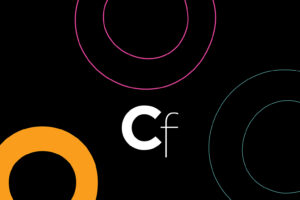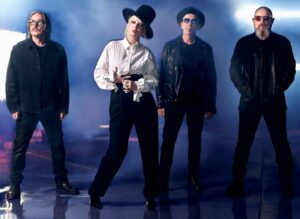Why Is Picasso’s Guernica So Important?

Pablo Picasso was something of a latecomer to political activism, having embraced it only after reaching his 50s. Prior to that, his sole dedication was to himself, and the belief that his genius excused him from adhering to the rules that others were obliged to follow, whether that involved art or personal relationships. (His bad behavior, which included his overweening sexism, continued long after he became a man of the Left).
Likewise, his penchant for self-promotion colored his embrace of politics. He made a public show of joining the French Communist Party in 1944, publishing a manifesto about his decision in a 1945 edition of the American Marxist publication, The New Masses. “I have become a Communist,” Picasso wrote, “because our party strives … to make men … free and more happy;” somehow the fact that Stalin didn’t share these sentiments escaped him.
While some of his contemporaries refused to take his conversion seriously (Salvador Dalí once quipped, “Picasso is a Communist and neither am I”), Picasso remained an advocate for world peace and became a fierce opponent of both the Korean and Vietnam Wars. Asked about the role of art in politics, he once replied, “painting is not made to decorate apartments. It’s an offensive and defensive weapon against the enemy.”
However late Picasso’s political awakening may have come, its catalyst was the Spanish Civil War, and the singular atrocity that defined it—the bombing of the Basque city Guernica, to which Picasso responded with a painting. The most recognizable of his works alongside Les Demoiselles d’Avignon, Guernica became the most famous antiwar statement in art history.
Ongoing from 1936 to 1939, the Spanish Civil War has long been considered a rehearsal for World War II. The conflict began when the Popular Front, a coalition of Leftist parties, was elected in January 1936 to govern the Second Spanish Republic. In July of that year, a faction of Army generals representing ultraconservative forces within the country (including the Catholic Church), staged a failed coup, precipitating conflict between supporters of the government, the Republicans, and their opponents, the Nationalists. The latter were aided and abetted by Nazi Germany and Fascist Italy, who provided arms, troops, and most relevant for the genesis of Picasso’s cri de coeur, air support.
The attack on Guernica began around 4:30 in the afternoon on April 26, 1937, when bombers from two squadrons, the Nazi Luftwaffe’s Condor Legion and the Fascist Italian Aviazione Legionaria, among others—perhaps as many as 59 planes in total—dropped 22 tons of ordnance in a succession of raids lasting several hours. After the operation, much of Guernica lay in ruins. Estimates of civilian casualties varied from less than 200 to more than 1,000 out of a total population of 7,000.
Picasso had been commissioned prior to the tragedy to create a large mural for the Spanish pavilion at the 1937 World’s Fair in Paris. He’d chosen the subject of the artist’s studio before news of Guernica’s destruction broke. At the urging of Spanish poet Juan Larrea, Picasso switched direction, referencing the attack instead.
He started work on Guernica in late April or early May, and finished on June 4. Picasso was assisted by American artist John Ferren, while Dora Maar, Picasso’s mistress at the time, took photos of the work in progress. (Maar was also key in encouraging Picasso’s thematic pivot.) Picasso dropped his usual policy of not admitting visitors to his studio while he worked on the piece, making the exception to allow influential people to see him in action in the hope of promoting support for the Republican cause.
Rendered almost entirely in grisaille, Guernica is huge, measuring 11 feet 5 inches by 25 feet 6 inches. Picasso set the scene in a manger where animals and people are seen in a frenzy of anguish. Four women in different stages of agony dominate the composition (“Women are machines for suffering,” Picasso would later tell Françoise Gilot, another of his mistresses who eventually became his biographer). A fire rages on the canvas at right, consuming a women, while a mother on the left side keens for her dead child as a ghostly bull looms over them. A terrified horse in chain-mail armor occupies the center of the painting; run through with a lance, he tramples a figure grasping at a broken sword just beyond reach—presumably a knight thrown from a steed in the heat of battle. An eye-shaped ceiling fixture eerily lights what is essentially a modernist vision of hell.
While Guernica is obviously allegorical, Picasso refused to discuss its meaning, though the combination of references to Jesus’s birth (the manger setting) and death (stigmata piercing the soldier’s outstretched hand) suggests that the city’s bombing represents a kind of collective passion of the populace.
Controversy surrounded Guernica from the start. Some on the Left faulted it for being apolitical, though its renown grew over a succession of tours through Europe and America between 1938 and 1940. It also became the center of attention for headline-grabbing stories. In 1975 artist Tony Shafrazi spray-painted kill lies all across its surface, for reasons that were hazy but ostensibly about Vietnam; the painting was easily restored and Shafrazi was let off, becoming a high-profile gallery dealer in the ensuing years. In 2003 a tapestry replica of Guernica at the United Nations was covered up when then United States Secretary of State Colin Powell addressed the General Assembly in a bid to justify America’s invasion of Iraq, sparking an outcry.
When World War II broke out, Picasso entrusted New York’s Museum of Modern Art with the painting’s safekeeping with the proviso that it could not be returned to Spain until democracy was restored there. With Franco’s death in 1975, the stage was set for the painting’s repatriation, though it took another six years because of MoMA’s reluctance to part with it. Finally, under pressure by critics and others, MoMA relented; it now hangs in Madrid’s Reina Sofía Museum.
As an expression of political art, Guernica is hardly alone, but no one mobilized modernism in the fight against the forces of darkness quite the way Picasso did. Today, with the specter of authoritarianism newly ascendant, Guernica remains as relevant as ever.





